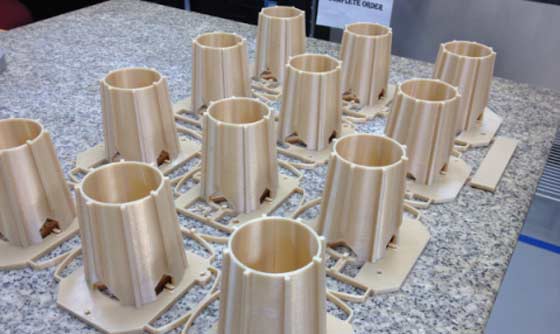Stratasys is increasingly present in every segment of manufacturing. So much so, in fact, that Stratasys Direct Manufacturing just signed an agreement with NASA’s Jet Propulsion Laboratory (JPL) to leave the planet Earth and bring its technology into space.
Stratasys Direct Manufacturing will use its professional FDM 3D printing technology to build an innovative system with a 30 antenna array that will be installed on the satellites of the projects FORMOSAT- 7 and COSMIC-2, aimed to create a new constellation of sensors to improve the observation of meteorological phenomena and climate.

“The use of Stratasys 3D printing technologies in this project shows how deeply 3D printing is transforming the manufacturing industry”, said Jim Bartel, SVP of Strategy, Marketing & Business Development at Stratasys Direct Manufacturing. “If this technology was considered valid to create something new in space, we can certainly say that it is possible to use it with as much, if not even more, success, right here on planet Earth.”

“The use of additive manufacturing is definitely the best solution to achieve the intricate design of the antenna array while the resistance provided by the ULTEM 9085 material makes it ideal for this project,” said Joel Smith, Regional Account Manager at Stratasys Direct Manufacturing. “Not only can we demonstrate the extreme resistance of our 3D printed components but we will ensure a significant reduction of time and costs.”
And with a 3D printer already on-board the ISS, implementing a process that is a direct derivation of Stratasys FDM, future satellites may just be 3D printed directly in space, further reducing the cost of colonization. If you are looking for a comfortable place to get away form the craziness of Earth, I hear orbit is quite nice this time of the year, and property prices are dropping fast.


